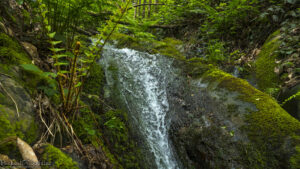Reading time: 7 minutes
If you love hiking, then the Via degli Acquedotti is an unforgettable experience! The route follows the southern variant of the Tuscan Francigena along the well-known Lorenzo Nottolini Monumental Aqueduct in Roman style. This aqueduct has been very important to the Capannori area and, with its more than 3 kilometers of arches, it traverses the flat countryside of Lucca up to the mysterious brass letters that stand out on the ancient bridge.

The First Leg: Badia di Cantignano
The route also passes through the hamlet of Badia di Cantignano, then reaches the Pieve di Vorno, where the “Rio di Vorno” reception center is located, equipped with a restaurant and accommodations. But the peculiar note of the village lies in the urban fabric of its splendid villas, formed between the sixteenth and eighteenth centuries. Furthermore, in this small village, you can admire the well-cared-for gardens and orchards.
The Observatory
From the Pieve di Vorno, you’ll reach the Astronomical and Ambientometric Observatory, an observation station located on Monte della Gallonzora, in a panoramic area without artificial lights disturbing the view of the sky. Then head towards the Pisan side in the Valle delle Fonti. Its name is derived from numerous water sources including deep aquifers with pure water appreciated since ancient times.
The old aqueduct will lead us on in the last stretch up to the walls of Pisa, where we will find peace and refreshment after this long walk in nature. The Via degli Acquedotti is an adventure among one of the most fascinating and unexpected landscapes in Tuscany.

The Aqueduct’s Construction
Historic aqueducts are not only monumental works of engineering but are also the roots that unite cities with the natural world that surrounds and sustains them. Following their path is a fascinating way to connect to the genius and efforts of their architects but also a way of rediscovering the juxtaposition between man and nature: opposition and an irreplaceable bond.
As already described, in Tuscany, you can experience this relationship by walking along the Via degli Acquedotti, the beautiful hiking route between Lucca and Pisa. Until the first decades of the 19th century, the city of Lucca’s water supply was entrusted to the wells that drew from the groundwater in the city’s subsoil. Given the scarcity and poor quality of this resource, in 1822, Maria Teresa di Borbone, Duchess of Lucca, entrusted the architect Nottolini with the task of building an aqueduct that drew from the sources located on the heights of the streams of Rio San Quirico and Rio della Valle. Within about ten years, the architect completed the construction of the 460 arches which, covering a distance of over 3 kilometers, carried the water up to the city walls, with two separate pipes: one for source, intended for drinking, and the other for that taken from the streams, used to feed the monumental fountains of the city.
Today, the aqueduct is no longer active but its structure is perfectly intact. Following its path allows us to experience a landscape that unites two neighboring lands, from its mountains, woods, and genuine cuisine. Dishes that have been traditionally created with just a few, simple ingredients but lots of flavor.
Have you already chosen this as your destination?
The Botanical Garden in Pisa
Once in Pisa, another destination to finish off the day is a visit to its Botanical Garden. Founded in 1543 by the naturalist, doctor and botanist Luca Ghini (1490-1556) it was the first botanical garden university in the world. Originally built on the banks of the Arno River, it was transferred to its current site in 1591 and then gradually expanded to its current size of approximately two hectares. It houses plants from five continents: succulents from African and American deserts; the aromatic plants of the Mediterranean maquis; the species of the Tuscan marshes; and numerous secular trees.





Photo copyrights: Michael Gaddini
About the Author

Born in Barga (in the Lucca province) in 1988 in the Garfagnini mountains, and after having explored the Pisan and Apuan mountains, I have found a second home in the Cuneo area immersed in the mountain community around the Bisalta. The latter is the first thing I see out the window when I wake up in the morning and in recent years, it has become my gym.
I have embarked on my journey by exploring nature through photography and video, studying and understanding the effects of natural light hands-on in the field.
Thus, I discovered a new vocation, that of an Environmental Hiking Guide: the perfect union of location shooting and environmental disseminator.
Thanks to this role as a guide, I have become more and more passionate about mountain landscapes, constantly looking for new paths, villages, and stories to tell. I am in love with the mountains and their magic, and I am convinced that nature itself is the greatest form of art. I always try to be present with a certain awareness on my hikes, allowing nature to set the pace.
I also enjoy reading, watching movies, simply listening, and being a silent observer of my surroundings.
Read more by this author!


